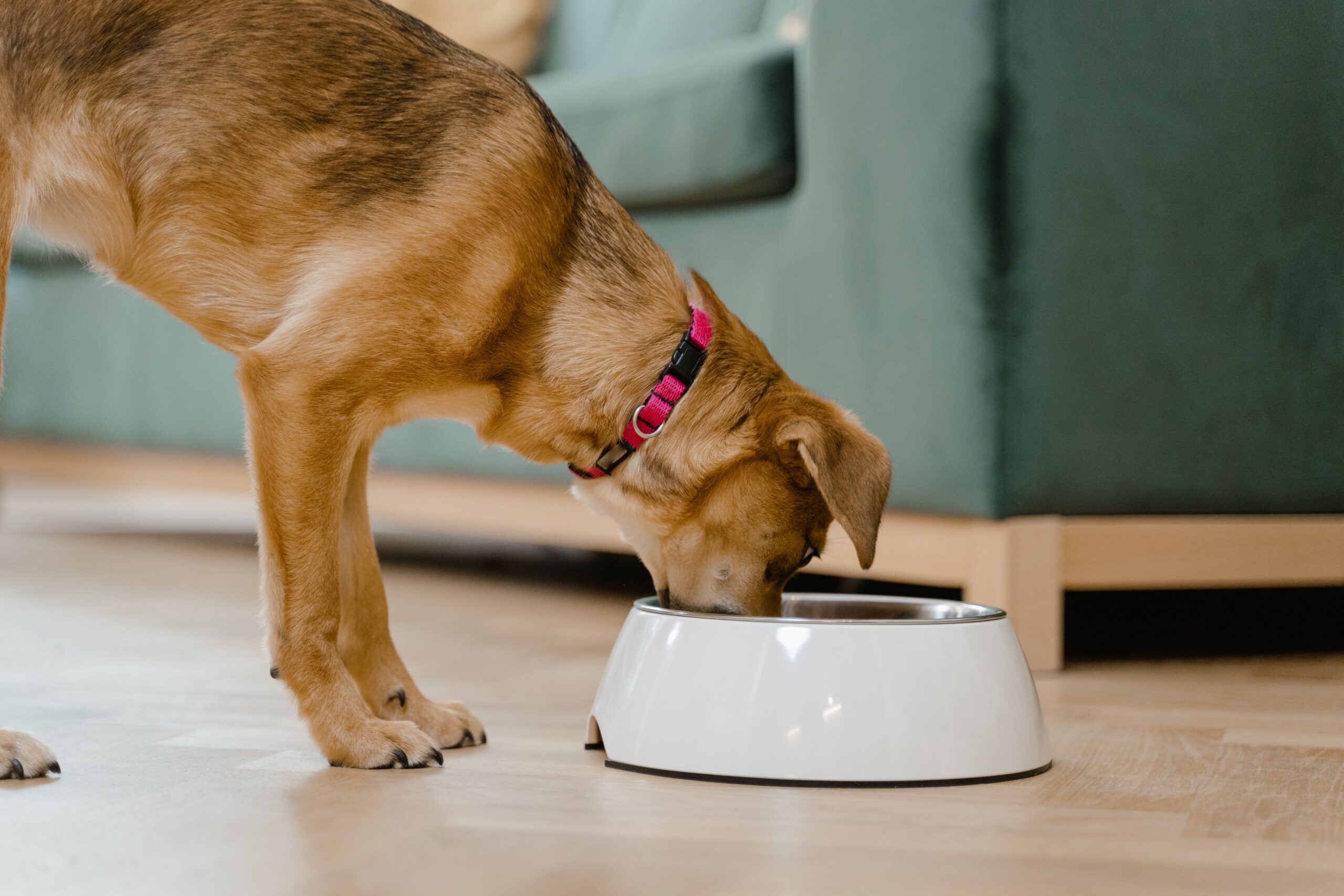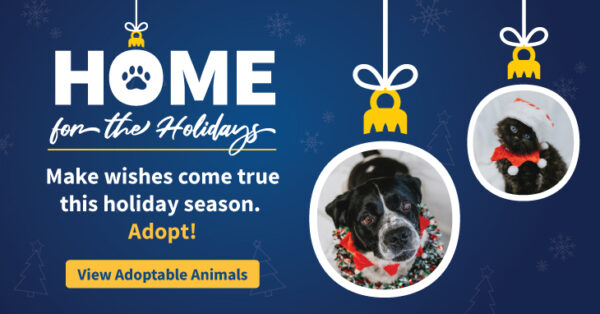Why does my vet start to look jumpy when I talk about feeding raw?
by Ontario SPCA and Humane Society | General Pet Care | August 5, 2022

Guest blog by Juanita Glencross, Royal Canin
My goal today in tackling this difficult conversation is to simply offer some insight into the thoughts that begin to spin in a veterinarian’s head the moment he or she hears the words raw and food in the same sentence. The first thing that I want you to know is that your vet may seem jumpy not because they necessarily disagree with your choice, but because, in this day and age, the raw feeding discussion has become a very polarizing conversation and most veterinarians (myself included) really, really hate conflict. We just want to keep your pet healthy and if they are sick, we want to make them better. This is a very hard conversation for us because we want to offer you the best medical advice, but we also don’t want to offend or upset you. As I mentioned, this particular conversation is often based in very strong feelings and opinions.
Think of your veterinarian as the advocate for furry family members who cannot speak for themselves, not unlike a person who is advocating for a loved one in a hospital bed who cannot advocate for themselves. We want to ensure that your loved one gets the best medical care possible in the safest way possible. That said, in my experience, many people who raw feed or want to consider raw or homemade feeding are often those who are the most engaged and invested in their pet’s health and I do understand that these decisions are often based on a desire to do the very best that they can for their pet. I really do want to work with you not against you. I have seen dogs and cats who thrive on homemade or raw diets, but equally most pets also thrive on commercial dry or moist food and quite honestly, most of our pets are quite happy to eat the same thing day in and day out. Unlike we humans, who consider a meal to be an experience, our pets generally just see food as fuel to keep the body going. No pet has ever taken a picture of their food and shared it with their closest 2500 Facebook or Instagram friends, nor have they ever given a Yelp review. My job, as your pet’s veterinarian, is to make sure that we are achieving the goal of supplying the best care for your pet, but also ensuring that we are doing it safely and that everyone is on the same page about the choices that are being made.
Let me walk you down the pathway of how a veterinarian tends to think when we make a nutritional recommendation. Every patient is different and so we start with the most basic questions in our head. When thinking about any food recommendation we ask ourselves 3 questions:
Is it safe?
For veterinarians, when we think about raw diets, this question is definitely the most important one. Not only do we want your pet to be healthy, but we want your family to be as well. Why are we so worried? One word: contamination. How often do we hear about E.coli/Listeria/Salmonella outbreaks in the news because people have become ill? We all know that public health has very clear guidelines on the internal temperatures that our food should reach to avoid illness as a result of some seriously nasty bacteria. In general, this means cooking our food to reach a safe temperature. Well, the human food supply isn’t the only one with reports of contamination and recalls. The FDA also tracks contaminations in pet food which can be accessed by anyone with a computer (https://www.fda.gov/animal-veterinary/safety-health/recalls-withdrawals). I accessed this link recently to see how many pet foods (dog and cat) or treats have recently been recalled as a result of proven or potential bacterial or mold contamination. Between January 2017 and December 2021 there were 55 recalls. Of these recalls, 44 were in commercial uncooked/raw foods or treats and only 11 in cooked commercial food.
Your pet isn’t the only being who I am worried about. There are also reports of humans who were infected as a result of being exposed to raw pet food where routine hygiene precautions were inadequate. I really don’t want to see your child, your grandparent, or an immunosuppressed family member get sick. If commercial kibble is not an option for your family, then could we compromise and at least consider cooking food to a proper temperature to make it safer for your family and your pet?
Is it complete and balanced?
Once I am confident that the food is most likely safe, then the next thing I want to be certain of is that the diet has a nutritional adequacy statement. If it does, then I know that this diet meets or exceeds all of the NUTRIENT needs of the species for which it is made. Please note – nutrients and ingredients are different. Nutrients are the specific amino acids, minerals, vitamins, etc. that a pet needs to live a healthy life. Ingredients are simply the vessels used to supply specific nutrients to a diet. It should also be pointed out that not all ingredients bring the same nutrients “to the table”. What this means is that chicken brings different nutrients than fish which bring different nutrients than corn, etc. This is the reason your cat cannot survive eating only fish (for instance). While fish contain some pretty awesome nutrients (like EPA/DHA for example), unfortunately fish alone don’t have all the nutrients that your cat needs to be healthy.
This isn’t to say that your fresh, cooked diet isn’t complete and balanced, we just need to make sure. Some commercial fresh petfood companies have Board Certified Veterinary Clinical Nutritionists (this is a veterinarian who has completed several years of additional training in nutrition AFTER their veterinary degree) formulating their diets to ensure that they are complete and balanced! If you prefer to not buy a fresh (but cooked), commercial petfood and would rather do homemade (kudos to all the non-lazy people out there, I can barely make sure I cook for my family, let alone my pets) this can also be OK. Your vet can help you connect with a board-certified veterinary clinical nutritionist so that they can help you to make sure that Fido and Fluffy’s meals are complete and balanced. We don’t want your pet to end up with a nutritionally related disease which could make your pet very sick. In many cases, the smallest nutrients often have the largest impact.
Is it right for this pet?
Finally, I need to consider whether (or not) this diet is right for this pet. As mentioned earlier, I struggle to feed myself and my family on most days, so in my house a complete and balanced commercial kibble which meets the medical needs of my pet is what works best for me. That way, the only thing I need to do is to weigh out the proper amount for my pets. Homecooked or raw diets which have not been formulated for an individual pet’s medical needs may actually be very unhealthy or dangerous for a particular pet. This is the reason that we definitely need to engage with a board-certified clinical nutritionist to ensure that the home cooked diet accommodates all medical conditions that your pet may have. For example, many raw diets are exceptionally high in protein which is exactly what we don’t want in an animal whose kidneys are failing. Additionally, in pets with kidney disease, calcium and phosphorus levels are also very important and raw diets (particularly those which use bones or bonemeal) have very high calcium and phosphorus levels which can be dangerous for a pet whose kidneys are failing. Another example where a non-individualized homemade or raw diet can cause medical concerns would be in pets who struggle with constipation where the type and quantity of fibre that they are consuming is critical. In general, many raw diets tend to be quite low in fibre and this can actually exacerbate constipation, making a colon which is not able to function normally even worse. About 30 years ago a good friend of mine gave me some excellent advice which is still useful today. He told me “Be good to your colon and your colon will be good to you”, so let me advocate for your pet’s colon and ensure that any homemade or raw diet is right for your pet.
At the end of the day, I hope that if you elect to feed your pet raw or homecooked, we can have a conversation and together determine if it is the best choice for your pet or if we should be considering an alternative. I really do want to work together with you so that your pet can live their best life in the healthiest way possible. Please let’s both have grace and have a very difficult conversation and do our best to hear the perspective of the other person. Together we will make the best choices for your pet.

Juanita Glencross, DVM Dr. Juanita is a career-long educator who currently works as a Scientific Communications Specialist withRoyal Canin Canada. She relishes teaching both the home-dwelling humans who are owned by dogs and cats, as well as the veterinary professionals that keep the animal masters healthy. Much like the cat that came back, after several years in private, small animal practice she returned to her alma mater, the Atlantic Veterinary College as a clinical faculty member. In 2010, Juanita transitioned to teaching in Industry and works for Royal Canin. She now shares healthful, practical, and accessible pet nutrition recommendations with all who serve the pet masters. Juanita is currently owned by an imperious mini, wirehaired Dachshund as well as an alien overload that masquerades as a cat.
Categories
Testimonial
Thank you for looking after these animals
Thank you for looking after these animals — I would love to have them all in my house!
